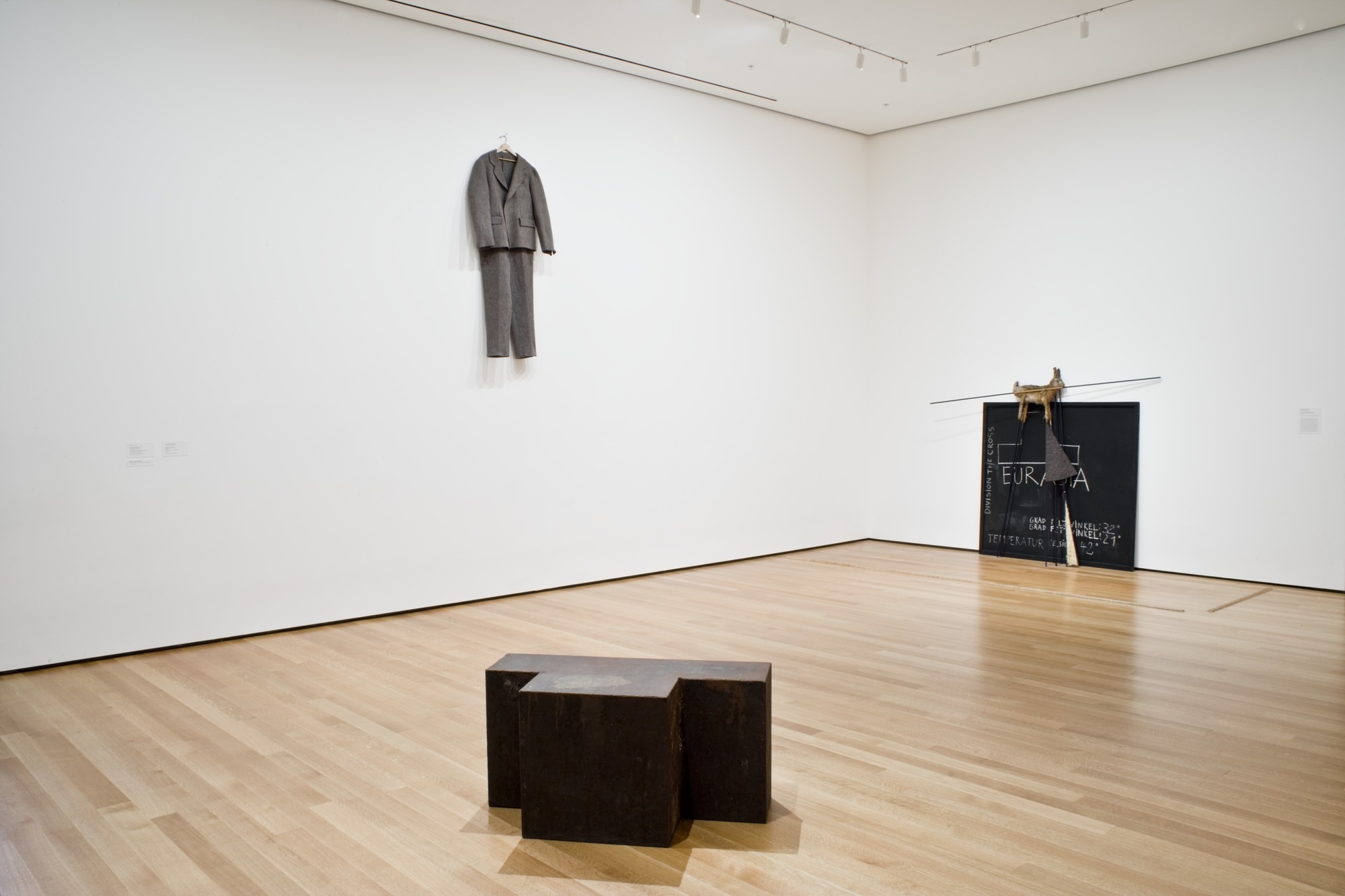Focus: Joseph Beuys
21 May 2008 - 22 Feb 2010

Installation view of the exhibition, "Focus: Joseph Beuys"
May 30, 2008–February 22, 2010. IN2039a.6. Photograph by John Wronn.
May 30, 2008–February 22, 2010. IN2039a.6. Photograph by John Wronn.
The Alfred H. Barr, Jr. Painting and Sculpture Galleries, fourth floor
Joseph Beuys (1921–1986) is widely understood to be the most important German artist of the post–World War II period. Highly provocative and always controversial, he and his peers reinvented a thriving avant-garde after the long period of Nazi repression. His influence is comparable to that of the American artist Andy Warhol, but whereas Warhol’s work features a style and imagery that is readily accessible, Beuys intentionally devised a challenging formal vocabulary, layered with meaning and metaphor.
The centerpiece of the gallery is a new acquisition: a set of five vitrines accompanied by two wall objects, constituting a mini-museum of works made between 1948 and 1982. Beuys often displayed assemblies of small sculptures in freestanding vitrines like those found in natural history museums. This form of presentation has become as synonymous with Beuys’s work as his signature materials of fat and felt.
During the 1960s and 1970s Beuys was a major pioneer of performance art. In his “actions,” as he called them, he used time, sound, and objects as sculptural materials. Many of his sculptures, including those on view here, originated in actions and serve as relics of those events as much as autonomous works. The actions also survive in photographs, films, and video that capture the power with which the artist used his physical and psychic energy to create unforgettable scenarios infused with mythological, historical, and personal resonance.
Beuys did not consider art to be separate from society, and he devoted the last twenty years of his life to both art and constant activism for socioeconomic reform (he was a founding member of Germany’s Green Party). The blackboard diagrams he made during countless public lectures, evoking his early drawings as well as his experience as a professor of art, describe his “social sculpture”: the application of creative strategies and ideals to the achievement of a free and democratic world community.
The exhibition is organized by Ann Temkin, The Marie-Josée and Henry Kravis Chief Curator of Painting and Sculpture.
Joseph Beuys (1921–1986) is widely understood to be the most important German artist of the post–World War II period. Highly provocative and always controversial, he and his peers reinvented a thriving avant-garde after the long period of Nazi repression. His influence is comparable to that of the American artist Andy Warhol, but whereas Warhol’s work features a style and imagery that is readily accessible, Beuys intentionally devised a challenging formal vocabulary, layered with meaning and metaphor.
The centerpiece of the gallery is a new acquisition: a set of five vitrines accompanied by two wall objects, constituting a mini-museum of works made between 1948 and 1982. Beuys often displayed assemblies of small sculptures in freestanding vitrines like those found in natural history museums. This form of presentation has become as synonymous with Beuys’s work as his signature materials of fat and felt.
During the 1960s and 1970s Beuys was a major pioneer of performance art. In his “actions,” as he called them, he used time, sound, and objects as sculptural materials. Many of his sculptures, including those on view here, originated in actions and serve as relics of those events as much as autonomous works. The actions also survive in photographs, films, and video that capture the power with which the artist used his physical and psychic energy to create unforgettable scenarios infused with mythological, historical, and personal resonance.
Beuys did not consider art to be separate from society, and he devoted the last twenty years of his life to both art and constant activism for socioeconomic reform (he was a founding member of Germany’s Green Party). The blackboard diagrams he made during countless public lectures, evoking his early drawings as well as his experience as a professor of art, describe his “social sculpture”: the application of creative strategies and ideals to the achievement of a free and democratic world community.
The exhibition is organized by Ann Temkin, The Marie-Josée and Henry Kravis Chief Curator of Painting and Sculpture.
